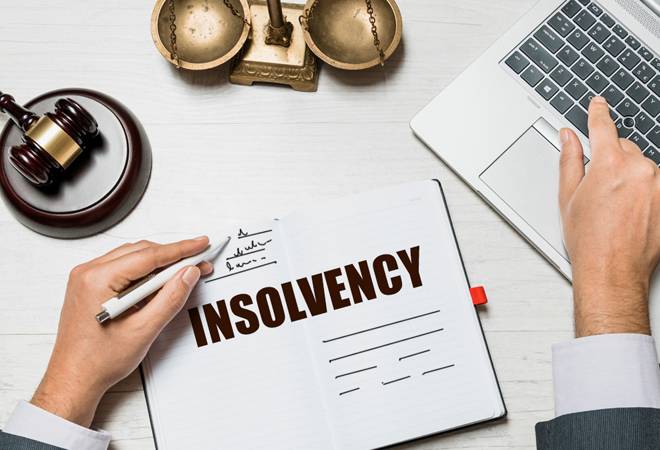The 5-Second Trick For Insolvency Practitioner
The 5-Second Trick For Insolvency Practitioner
Blog Article
The 6-Second Trick For Insolvency Practitioner
Table of ContentsThe Buzz on Insolvency PractitionerInsolvency Practitioner Can Be Fun For AnyoneWhat Does Insolvency Practitioner Do?The 9-Minute Rule for Insolvency Practitioner6 Easy Facts About Insolvency Practitioner ExplainedThe Single Strategy To Use For Insolvency PractitionerUnknown Facts About Insolvency Practitioner
Insurance policy is kept track of and regulated by state insurance coverage divisions, and among their primary objectives is protecting insurance policy holders from the danger of a business in financial distress. When a business goes into a period of economic trouble and is not able to meet its obligations, the insurance commissioner in the business's home state initiates a processdictated by the legislations of the statewhereby initiatives are made to help the company regain its economic ground.If it is identified that the company can not be refurbished, the company is declared financially troubled, and the commissioner will ask the state court to order the liquidation of the business. The insurance commissioner, either assigned by the guv or elected, heads the state insurance policy division and screens and controls insurance coverage task within the state.
[Back] By obtaining control of a firm, the commissioner (or the insurance department) is, by regulation, the rehabilitator or liquidator of the business. In this capacity, the commissioner or department takes control of the company's operations. As opposed to do so straight, the commissioner may retain an unique deputy receiver to oversee the company's tasks - Insolvency Practitioner.
8 Simple Techniques For Insolvency Practitioner
The receiver supervises an audit of the firm's possessions and obligations and carries out the estate of the company. In doing so, the receiver seeks to optimize the firm's properties, transfer them to cash money, and afterwards disperse that cash money to lenders having legitimate claims against the insurance firm in accordance with payment priorities specified by state law (in all states, policyholders are top priority claimants whose insurance claims are paid before those of basic financial institutions).
All insurer (with minimal exceptions) accredited to market life or medical insurance or annuities in a state have to be participants of that state's guaranty organization. The warranty organization cooperates with the commissioner and the receiver in pre-liquidation preparation. As soon as the liquidation is bought, the guaranty association gives protection to the company's policyholders who are state homeowners (up to the degrees specified by state lawssee listed below; any kind of benefit amounts above the guaranty asociation benefit degrees end up being cases against the company's continuing to be possessions).
The Definitive Guide to Insolvency Practitioner
The above protection degrees apply individually for each financially troubled insurance firm. When an insurer fails and there is a shortage of funds needed to meet the commitments to insurance policy holders, state guaranty associations are activated. Guaranty organizations have subrogation civil liberties to a proportional share of the properties staying in the stopped working insurance firm.
Second, insurance firms doing company in that state are evaluated a share of the amount required to fulfill the part of the guaranty organizations' covered claims not or else funded with estate properties. The quantity insurers are analyzed is based on the quantity of premiums that they collect in that state. The National Organization of Life and Wellness Insurance Policy Guaranty Organizations (NOLHGA) is made up of the life and wellness insurance guaranty associations of all 50 states and the District of Columbia.
NOLHGA establishes a task force of representative guaranty associations to work with the insurance coverage commissioner to establish a plan to secure policyholders.
How Insolvency Practitioner can Save You Time, Stress, and Money.

Predictive defense by assisting you choose the right customers and the right markets to avoid bad financial debt in the initial place, thanks to intense financial evaluation. image source Thorough market intelligence, supplying you with 360-degree presence on company fields and foreshadowing problems. It would certainly be a simplification to believe a trade credit report insurance begins and ends with premiums and pay-outs.

The 2-Minute Rule for Insolvency Practitioner
It can lead to work losses, property sales, and even personal bankruptcy. It is essential to recognize just how corporate insolvency works and how it can affect your service. Why does a firm enter into bankruptcy? There are a variety of reasons that a business might get in into bankruptcy. The most common reason is that the company is incapable to pay its financial this page debts as they drop due.
Various other reasons for insolvency consist of scams, mismanagement, and unforeseen expenses. When a company ends up being financially troubled, its properties are utilized to settle its debts. This can have a major effect on the organization, as it might no much longer be able to proceed running. Insolvency can additionally result in task losses and the closure of organizations.
Insolvency Practitioner for Dummies
The business might be required to sell properties, lay off personnel or also close down. Financial institutions may be left out of pocket and the firm's shareholders may see their investment vanish.
This can occur for a variety of factors, including poor financial monitoring, unanticipated prices, or an adjustment out there. If a business is financially troubled, it may be compelled to fold or offer off properties to pay lenders. This can have a significant effect on the organization, staff members, click resources and investors.
Why does a firm enter into bankruptcy? There are a number of factors why a company might enter into insolvency.
An Unbiased View of Insolvency Practitioner
Various other reasons for insolvency include fraudulence, mismanagement, and unanticipated expenses. Insolvency can likewise lead to work losses and the closure of companies.
The company may be compelled to offer possessions, lay off staff or also shut down. Creditors might be left out of pocket and the business's shareholders might see their financial investment go away.
Report this page